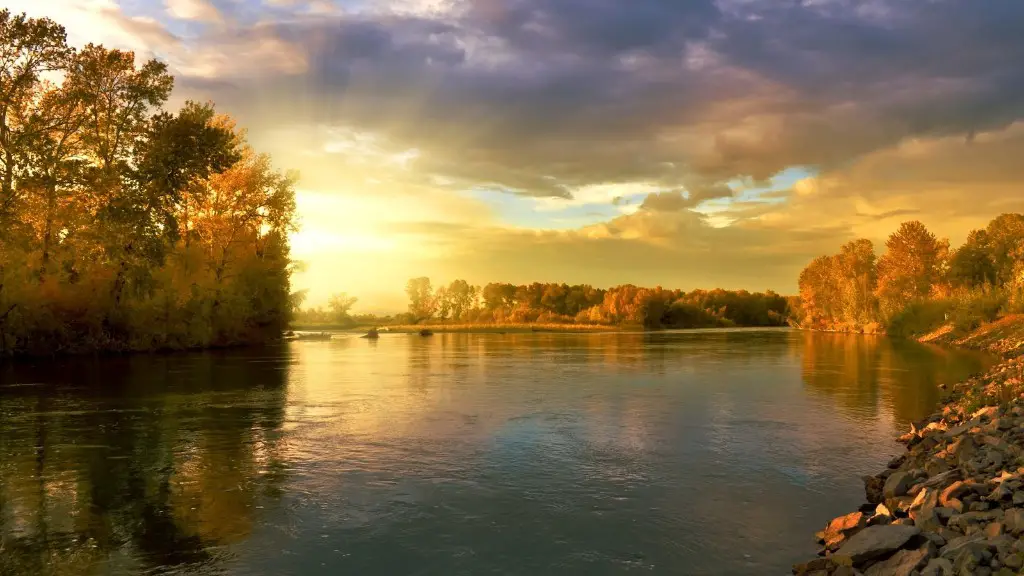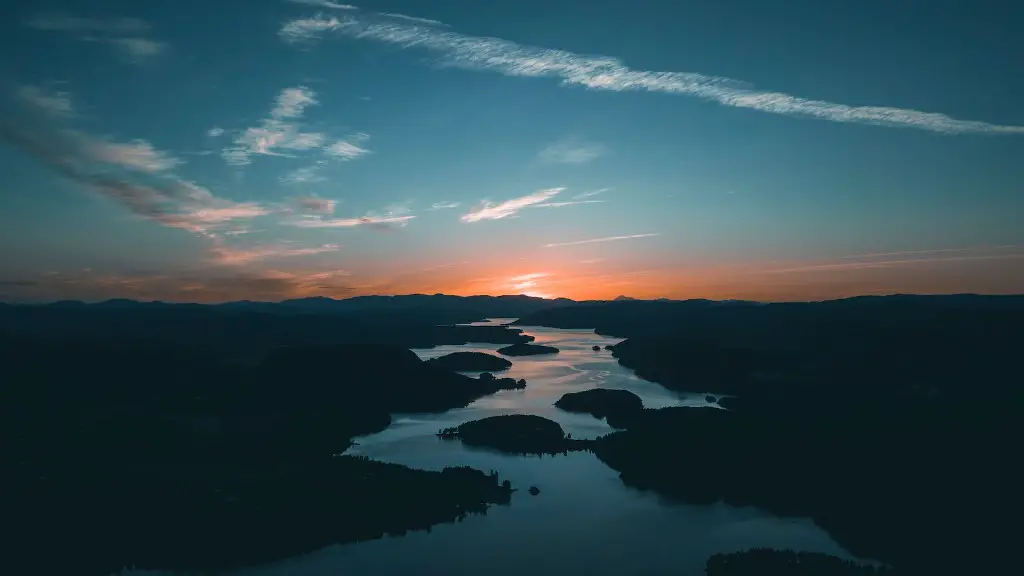The Nile river is without question one of the most iconic rivers in the world, with a history of thousands of years and the primary resource for roughly 400 million people. Located in northeastern Africa, the Nile River is the most valuable natural resource in the region, giving life to land and people for centuries.
The Nile River’s source can be traced to the ancient civilizations of Ethiopia and Egypt, located at the northern end of Africa’s Nile Valley. Millions of years ago, it is thought that the Nile began as a huge lake in the Ethiopian Highlands. As it dried up over time, the lake became a network of streams that fed into the Mediterranean Sea.
The Nile is 4,258 miles (6,853 kilometers) long, a distance that travels through Egypt, Sudan, South Sudan, Ethiopia, and Uganda. From its source in Ethiopia, the river flows northward into Sudan, where it passes through 4 deep gorges, then turns westward to the Egyptian side of the Nile Valley. Eventually, the Nile flows just south of Cairo before emptying into the Mediterranean Sea at the Delta.
In addition to its impressive length, the Nile contributes over 10% of all the water that flows into the Mediterranean Sea. This makes it the second largest river system in Africa, with the Congo River being the largest. It carries more than 57 trillion gallons of water, making it one of the most important sources of water in the world.
The Nile is also among the most heavily used rivers in the world. Not only is it a primary source of water for farming and drinking, but it is also the primary transportation system for the region. Millions of travelers, traders, and pilgrims make their way up and down the Nile in boats, from the most humble of rafts to the most luxurious of riverboats.
For generations of Africans, the Nile River has been central to life and culture. Ancient Egyptians used it for food, transportation, and spiritual ceremonies, and today, the Nile remains an important natural resource for African countries. It is an integral part of local economies and national infrastructure and serves as the backbone of many countries’ agricultural, oil, and trade industries.
Environmental Impact of the Nile
The Nile River, like many natural resources in the world today, is under threat from climate change, industrializaion, and population growth in the region. While the river still provides essential functions to vast swaths of the African continent, its vastly different levels of sustainable use further north and south of its basin have lead to numerous environmental problems.
The northern part of the Nile Basin suffers from overuse, which has caused a number of significant problems. Overuse has put stress on groundwater reserves, leaving them more easily contaminated, and has also caused more serious issues like soil erosion, desertification, and increased salinization of the soil. Meanwhile, the southern part of the Nile has been affected by deforestation and poor agricultural practices, both of which have led to massive amount of soil degradation that could potentially affect the region for years to come.
The issue of pollution is another critical issue facing the Nile River. Civil unrest in the region has led to increased levels of sewage, toxic chemicals, and industrial waste flowing into it, jeopardizing its vitality and putting the health of the peoples’ relying on it in danger.
Fortunately, there have been steps taken to mitigate the environmental impacts of the Nile. A number of government-led initiatives have sought to protect and preserve this vital waterway. In particular, there have been efforts to reduce water overuse and promote better use of irrigation systems to ensure the river’s continued productivity. In addition, there have been initiatives to reduce the amount of sewage and industrial waste being dumped into the river and promote better water management practices.
Social Impacts of the Nile
The Nile River has an immense social significance to the peoples of the region. It has been used in spiritual ceremonies, providing sustenance and flourishing local economies, and providing a sense of identity to the many people living along its banks.
The Nile has been an integral part of the region’s culture for centuries, providing fresh water for everyday tasks, such as drinking, cooking, and bathing. People of the region also depend on the river for agricultural use, which is the source of their livelihood. Additionally, it is the primary means of transportation for goods, services, and tourists within the region, connecting people and cultures.
For many people, the Nile is a source of pride and identity. It holds a deep spiritual significance for many, representing a life-giving force that has sustained generations. This, along with its commercial and cultural importance, make the Nile one of the most celebrated and cherished rivers of all time.
However, while the Nile is critical to the people of the region, it also has a somewhat contentious relationship with many countries in the region. The Nile’s basin includes the territories of 11 countries and over the years, border disputes and politics have set off a rivalry and tension between the people of the nations that rely on it.
These turbulences have caused serious issues throughout the region, as different countries are often pitted against each other in disputes over rights to the river and its resources, leading to volatility and mistrust between many countries.
Egypt’s Role in the Nile
Egypt, located at the northern end of the Nile Basin, has long been a critical player in the region due to its access to the Nile and its extensive network of infrastructure. As one of the most powerful nations in the region, Egypt has long sought to protect its access to the river and serve as the gatekeeper to its resources.
The Egyptian government has invested heavily in the development of the Nile, building canals, dams, and irrigation systems for efficient use of the river’s water. This has provided the country with an abundant source of water for both drinking and agricultural use, helping to fuel its strong economy.
In recent years, however, Egypt has come under increasing pressure from the other Nile Basin countries who have sought to challenge its control of the Nile and use it in a different way. The most notable of these disputes is between Egypt and Ethiopia, which have long been locked in a conflict over Ethiopia’s plans to build a massive hydroelectric dam on the river. The dispute has the potential to reshape the future of the Nile and the region at large, with implications for millions of people and generations to come.
Challenges of the Nile
To help address the numerous challenges facing the Nile River and its basin, there has been an increased focus on regional collaboration and cooperation. In 1999, the nine riparian countries of the Nile signed the Nile Basin Initiative, which focused on the sustainable management of the river through consensus-building and cooperation between the nations.
In addition to this agreement, efforts have also been made to ensure the river’s long-term sustainability through better water management, improved irrigation techniques, and better farming practices. By taking these measures, the countries hope to mitigate the environmental impacts of the river and protect its cultural and spiritual significance for future generations.
However, with the continuing population growth in the region and the increasing demand for its resources, the Nile poses a range of major challenges to the people of the region. While progress has been made in areas like water management and environmental protection, it is important that the region’s countries continue to invest in the sustainable development of the Nile to ensure its viability in years to come.
Global Importance of the Nile
The Nile River is an undeniable force in the region and a critical element in keeping people and economies afloat. However, its importance extends beyond Africa, as the river is a major source of freshwater for large parts of the world. The Nile’s intricate web of streams, reservoirs, and canals provides vital water to nations as far away as Saudi Arabia, providing them with a much-needed resource.
This global reach underscores the importance of the Nile’s sustainability in the years to come. With the effects of climate change becoming increasingly evident, the survival of the river is even more critical. Without a sustainable approach to its management, the region’s economic and environmental security could be at risk.
But with the world’s attention now focused on the Nile, there is hope for its future. With an increased focus on collaboration between the region’s countries, better water management, and improved environmental protection, the Nile can become a model for sustainable development and a source of pride for generations to come.
Innovations in the Nile
As the understanding of the Nile’s value increases, so too does the recognition of the need to innovate in order to make the most of it. In recent years, many entrepreneurs, innovators, and researchers have begun to focus on developing tools and methods to make better use of the river and its resources.
For example, start-ups in the area of renewable energy have begun to explore the potential of harnessing the power of the Nile to generate clean electricity. Similarly, engineers have begun to develop innovative methods of using the river for food production. These developments have the potential to revolutionize the way the river and its basin is used, offering a better future for generations to come.
This is just the beginning of the potential of the Nile River. With its ever-growing population and increasingly complex needs, the Nile presents numerous opportunities to help its people and its basin thrive. Whether it be through technological breakthroughs or renewed cooperation, the Nile has the potential to become a source of hope and progress for the region.
Impact on Local People
For the people of the Nile Basin, the future of the river is a vital component of their lives and livelihoods. Millions of people are dependent on it for their daily needs and the changes to it have an immense effect on their lives. As the river faces a variety of environmental and political challenges, local people have begun to take action to ensure its sustainability.
One example of this is the establishment of the “Communities of the Nile Basin”, a civil society organization dedicated to the sustainable management of the river and the promotion of equitable use of its resources. This organization seeks to engage local people in the management of the river, as well as promoting understanding of the complexities involved in protecting it.
In addition, local people have taken it upon themselves to increase their knowledge and understanding of the river, recognizing the need to be informed in order to protect it. This includes activities such as community-based monitoring of the river, and the establishment of local baselines for the quantity and quality of water. These efforts highlight the importance of local knowledge and engagement, as well as the importance of local people to the future of the Nile.





